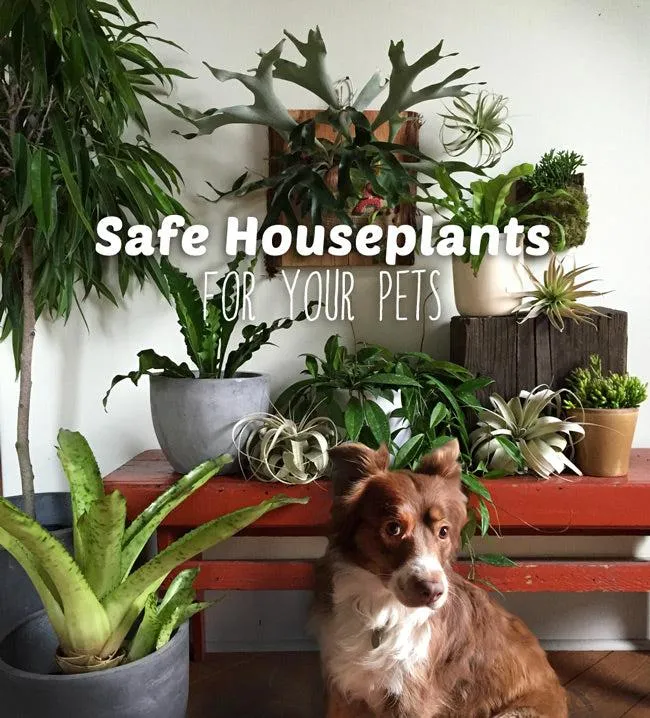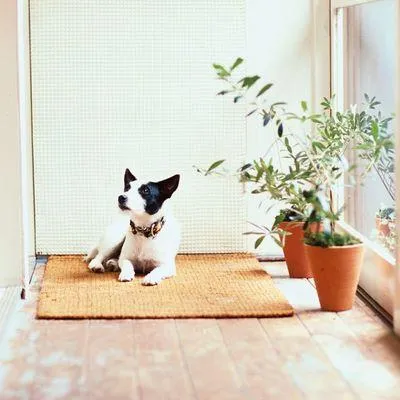Are Hoya Plants Safe for Cats?
If you have both houseplants and feline friends in your home, it’s natural to wonder whether certain plants pose any risks. One popular houseplant is the hoya, known for its waxy leaves and charming white or pink flowers. As a caring pet parent, you want to make sure your plants are non-toxic before allowing your kitty companions close access. In this article, I’ll explore the question of whether hoya plants are safe for cats.
Hoya Plant Toxicity
The good news is that most hoya plants are considered non-toxic to cats. While some plants can cause mouth irritation, vomiting, or even kidney damage if ingested by cats, hoyas do not seem to produce any significant symptoms of toxicity. According to the ASPCA Animal Poison Control Center, hoyas appear to be generally safe for cats when consumed in small amounts.
From my experience owning hoyas and cats for many years, I’ve never seen any issues even when a curious kitty decides to sample a hoya leaf. At the same time, it’s always best to be cautious since every cat has their own unique tolerance levels. If your cat likes to chew on plants, it’s safest to keep hoyas up high or in closed rooms to avoid any potential risks.
Should You Still Be Careful?
While hoyas may have low toxicity, there are still good reasons for cat owners to take some precautions:
- Cats may want to nibble. Even non-toxic plants can cause digestive upset if chewed and swallowed in excessive amounts. It’s best not to leave hoyas where a nibbling cat can easily access them.
- Latex risk. Some hoya varieties contain latex, which some cats may be sensitive or allergic to. Latex contact could potentially cause skin or mouth irritation in sensitive kitties.
- Individual tolerance varies. As with any plant, there’s always a slight chance an individual cat could experience minor stomach upset from ingesting hoya. It’s impossible to predict every cat’s exact tolerance levels.
So while hoyas seem generally safe, I always take precautions like hanging plants up high or using sturdy plant stands. Proper care can help ensure your cats enjoy the greenery without any tummy troubles. An ounce of prevention is worth a pound of cure, as they say!

Cat-Proofing Your Home and Plants
Whether you have hoyas or other houseplants, it’s a good idea to do a full “cat-proofing” sweep of your indoor plant collection periodically. Here are some tips:
- Hang plants. Use chains, hooks, wall mounts or tall plant stands to keep leaves and flowers up high.
- Protect surfaces. Lay contact paper or double-sided tape on shelves and tabletops to discourage climbing and nibbling.
- Trim access. Keep certain plants in restricted, closed-off rooms if necessary. Use furniture or gates if needed.
- Know toxicity levels. Research all your plants and remove any high-risk varieties that could make your cat seriously ill.
- Watch for signs. Keep an eye out for leaf shredding, spitting up, diarrhea or other potential signs of minor ingestion or irritation.
Adopting prudent safety measures can help ensure your hoya collection remains a non-issue when it comes to feline cohabitation. With a little preparation, you can continue to enjoy your green thumb hobby while giving your resident cats plenty of space to roam freely.
Alternative Plant Parenting Strategies
If full-proof cat-proofing seems like too much hassle or you find your kitties just can’t resist nibbling, another option is choosing low-risk, cat-friendly houseplants:
- Succulents. Most succulents are non-toxic. Their thick leaves also discourage nibbling.
- Peace lilies. These lovely white flowers are non-toxic and their large waxy leaves aren’t too appealing to chewers.
- Snake plants. Their sword-shaped foliage isn’t very enticing to nibble and they tolerate low-light areas well.
- ZZ plants. Sturdy and low-maintenance, these tolerant beauties pose little risk to cats.
Or, you may decide to keep your hoyas and other lovely specimens as outdoor plants if kitty safety is a top priority. Just be sure to move them inside during extreme weather events. With some creative thinking, you can successfully combine your nature-loving interests!
Dealing with Ingestion Issues
Here are a few tips if kitty accidentally tastes a leaf despite your best precautions:

- Remain calm. Many minor plant ingestions cause no harm. Contact your vet right away if symptoms appear severe.
- Induce vomiting. With vet guidance, you may use hydrogen peroxide to make the cat throw up undigested pieces.
- Watch closely. Look for drooling, vomiting, diarrhea or lethargy within 12 hours of ingestion. Contact an emergency vet for concerning symptoms.
- Hydrate. Offer extra water or electrolyte solution to flush out the system if modest symptoms occur.
With attentive care and quick action, most mild plant accidents end without issue. Keeping your vet’s contact info handy offers peace of mind. But hoyas are usually quite kitty-friendly plants!
Final Thoughts
In conclusion, while no plant is 100% risk-free, hoyas generally seem to pose a very low risk of harming cats when ingested in small amounts. By taking modest precautions like upward placement or cat-proofing, you can likely keep both your hoya collection and kitties content. Of course, every individual cat’s unique preferences and proclivities should be considered. With a cautious approach and ready information resources, responsible plant parenthood is compatible with feline cohabitation.
With a little preparation and common-sense care methods, hoyas can brighten your home aesthetically without stressing you out over pet safety. But as always, your cat’s well-being takes top priority – so check in regularly with a vet if any doubts persist. By observing prudent household measures, you’ve got this plant parenting thing in the bag!
Hoya Plants Safe for Cats
| Plant Name | Toxicity Level | Symptoms if Ingested |
|---|---|---|
| Hoya carnosa | Low | Mild gastrointestinal upset |
| Hoya kerrii | Low | Mild gastrointestinal upset |
| Hoya bella | Low | Mild gastrointestinal upset |
| Hoya obovata | Low | Mild gastrointestinal upset |
| Hoya pubicalyx | Low | Mild gastrointestinal upset |
| Hoya australis | Low | Mild gastrointestinal upset |
FAQ
-
Are hoya plants poisonous to cats?
Hoya plants, also known as wax plants, aren’t generally viewed as unsafe for cats. However, cats may nibble on the waxy leaves or flowers out of curiosity. If your cat eats a good amount of the plant, it could cause some digestive issues. So it’s best to keep hoya plants out of reach of curious kitties.
-
Can cats eat hoya leaves?
While hoya leaves aren’t considered highly poisonous, it’s not recommended to let cats eat them. The leaves may cause minor stomach upset like vomiting. Eating lots of leaves could potentially harm your cat. Most veterinarians say to simply keep your hoya plant where kitty can’t get to it, just to be safe.

-
“Does my cat really like to chew on plants?”
Some cats enjoy nibbling on plants, and it looks like hoya is one that piques their interest. Cats chewing on plants is basically just exploration and entertainment for them. At the same time, we don’t want them eating something that could make them sick. It’s puzzling why plants draw them in, when a simple toy would do! Perhaps there’s some aroma in plants that stimulates cats. Ask your vet if you’re ever unsure if a plant is toxic.
-
“Can the sap from hoya leaves harm my cat’s skin?”
The sap from broken hoya leaves or stems could potentially irritate your cat’s skin if they come into contact. Similar to other houseplants, the sticky or glossy sap may cause redness. Nevertheless, a cat would have to really rub up against a broken leaf or stem. So minor contact is unlikely to be a problem. As long as you keep the plant out of high traffic areas, there should be no danger of skin irritation from the sap.
-
“What other plants pose risks for cats?”
Plants like lilies, as well as some ivy, hydrangea and poinsettia varieties can truly make a cat very sick. However, hoya seems to be on the lower end of the toxicity scale. Perhaps it’s best to view your houseplants as decorations to admire instead of snacks for cats! If you’re ever not totally sure about a plant, it never hurts to ask a vet. Their advice is usually more reliable than online articles.
-
“Should I get rid of my hoya if I have cats?”
Nah, you don’t necessarily have to dump your hoya plant just because you’ve got curious kitties wandering around. As long as you take some simple precautions like putting the plant up high or closing doors, it should be okay to keep. Maybe even decorate the plant pot with something eye-catching to discourage nibbling. Also give your cats plenty of appropriate chew toys as an alternative. With a little work, you can enjoy your hoya and keep your cats safe too.
-
“My cat just ate a hoya leaf – should I be worried?”
If your cat eats a small amount, like one hoya leaf, it’s likely nothing to freak out about. But it couldn’t hurt to watch closely for any signs of tummy trouble. If they seem to develop vomiting, diarrhea or any other issues, calling your vet for advice is smart. Chances are your cat will pull through okay, but it’s always better to check with a professional if you’re concerned at all. With any luck though, your little plant nibbler will be fine!

